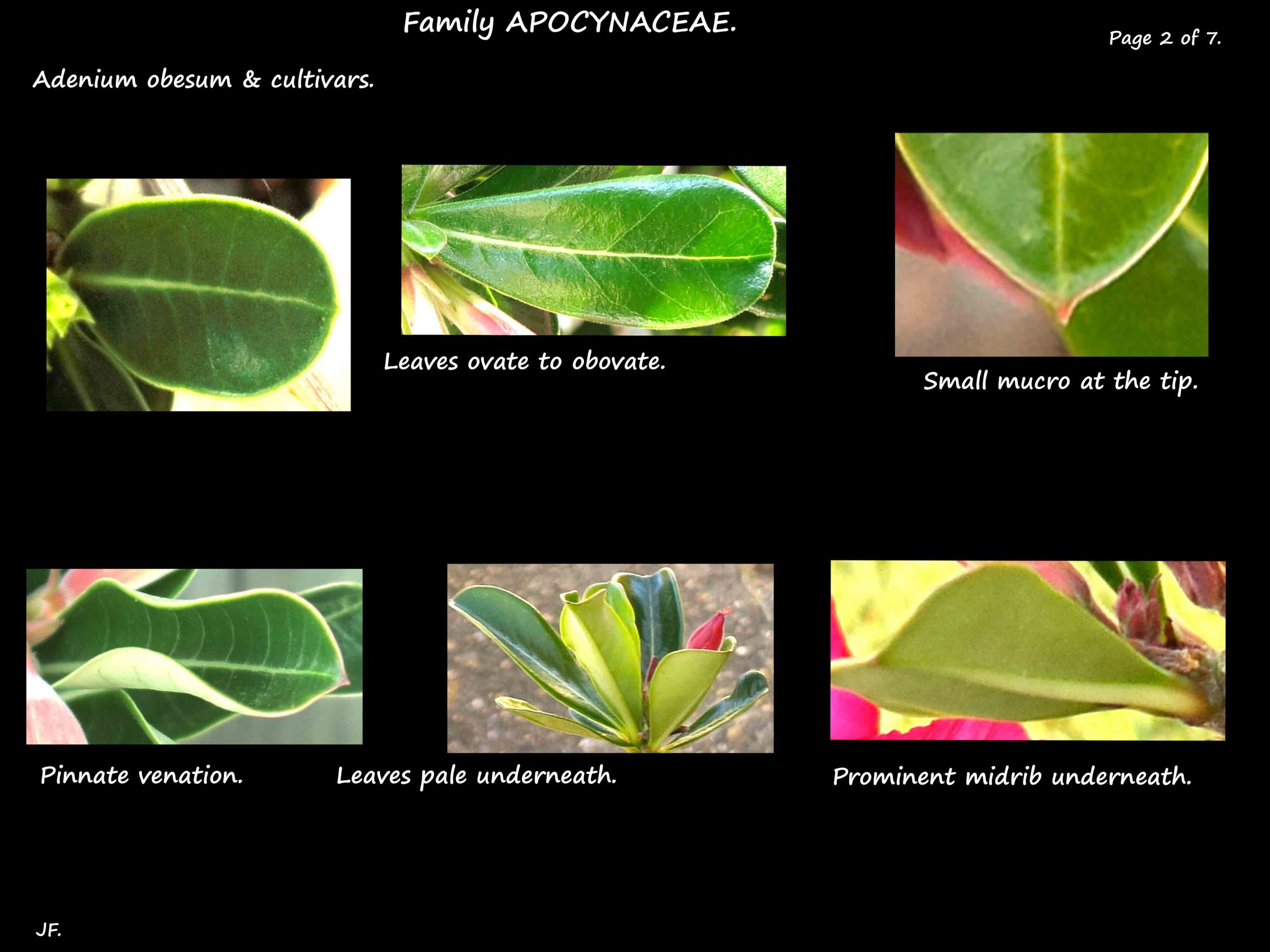Adenium.
Family Apocynaceae > Subfamily Asclepiadoideae.
Some say there are around 6 -10 Adenium species.
Others say there is one species (A. obesum) with subspecies and varieties.
In their native surroundings the plants are very variable making it more difficult.
They can be small shrubs to trees with erect to prostrate stems.
Flower shapes, sizes and colours also vary.
Adenium obesum & cultivars.
Known as the Desert rose some list up to 7 synonyms for it but others regard them as species.
It is the most commonly cultivated and a parent of the many hybrids and cultivars.
Succulent plants mostly seen as small shrubs but they can be trees up to 6 m high.
The base of the stem is usually swollen forming a water storing caudex.
The stem branches above the caudex and these may themselves branch sparingly.
The bark is a pale grey.
The shiny green alternate leaves, on very short or no petioles, are narrow, ovate or obovate.
Leaf size is variable from 3 to around 15 cm long.
The rounded tips may have a sudden tiny point (mucro).
They may be smooth or hairy.
Some of the leaves may fall in winter.
Branched terminal inflorescences are tight clusters of flowers.
They can appear before the new leaves or with them.
The stems are up to 1 cm long and there are narrow bracts under 1 cm long.
The 5 sepals are only 1 mm or so long.
The flowers vary in size and can be up to 5 or 7 cm long.
The 5 petals have their bases fused into a tube usually longer than the flaring lobes.
The lobes end in an abrupt sharp point.
There are glandular hairs and a corona up to 5 mm long at the throat.
The pink to red petal margins fade to a white (or yellowish) throat.
The tube is pink or red outside and white inside.
There are often dark or faint, red to pink nectar guides in the throat.
Cultivars increase the colour range.
The 5 stamens, on short filaments, have long arrow-head shaped, hairy anthers.
The anthers converge and fuse with the swollen, 1 to 1.5 mm long stigma.
There are long, hairy appendages on the anthers often extending beyond the throat.
The fruit are follicles – from a single carpel and opening along one side.
They are greenish then purplish and up to 22 cm long.
The flat seeds, up to 14 mm long, have a tuft of hairs up to 3.5 cm long.
There are an increasingly large number of cultivars.
Some of these can flower most of the time and have flowers up to 11 cm across.
They come in single, double and triple forms; solid, bicoloured or patterned.
They can be pure white or shades of purple, yellow, reds and pinks.
Some have ruffled petals.
J.F.








